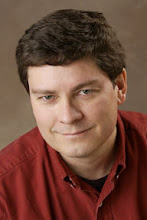or there's more to gray than meets the eye
Steve Wagner of Stand to Reason is soliciting comments regarding Adam Hamilton's interview in Newsweek, which Adam discusses on his own blog.
Steve's a very thoughtful and considerate guy, so when he notes someone besides himself is looking for common ground in the abortion debate it's worth a closer look. Prior to opening the discussion, Steve is taking his time to reflect on the solutions described by Adam.
Okay - I admit, I didn't reflect for so long, because simply browsing the chapter revealed some thinking that needs some immediate clarification, and it has to do with reflection. I may think differently after a more thorough read.
I think Adam's quote, along with his book illustrations summarizes what I see as essential to understanding his discussion:
I believe that number could be halved if people might be willing to see enough gray to work together with those who view this issue differently than they do.Adam needs a little lesson on color theory, because he's forgetting that how you morally proceed is based entirely on your perspective of God and the nature of man - in other words your foundational world-view.
Here's a nice gray metaphor - are we paper or are we a dark computer screen?
The additive color model is distinctly different from the subtractive. One adds light, while the other removes it. For instance, starting with a white page, dark spots added will remove the light reflection from the surface to arrive at gray. Conversely, if you are starting with a dark screen, you must add light to arrive at gray.
So is the substrate light or dark to begin with? In other words, is man currently good or evil? The substrate governs how we procede. But what is added, the procedure, also is crucial.
Clearly abortion is a moral procedure, but is it light or a dark spot? You can't answer that question without knowing if the substrate is dark or light.
So Adam's prescription for working towards middle ground makes an assumption that cannot be made - at least in a world of black and white, or more aptly, in a world of truth and light.
Because if the intention is to move towards gray, two opposite models will lead you there from two distinct directions, but only one fulfills God's will.
He assumes the substrate is the common ground, or a single dimension, which it isn't.
Only the light is the common element.
If we are called to be salt and light to this world, then our every move should reveal Christ to illuminate the darkness we face.




 Courtesy of MileHiMama.blogspot.com
Courtesy of MileHiMama.blogspot.com
|